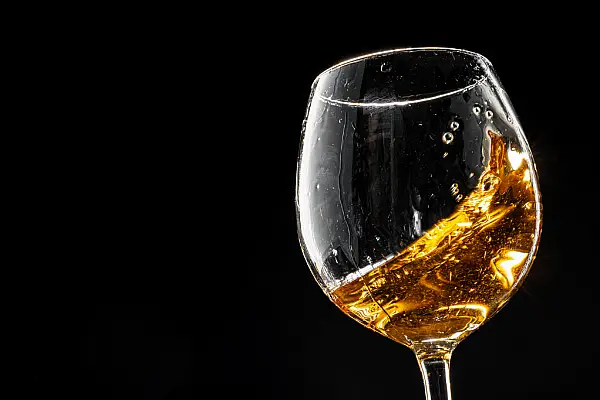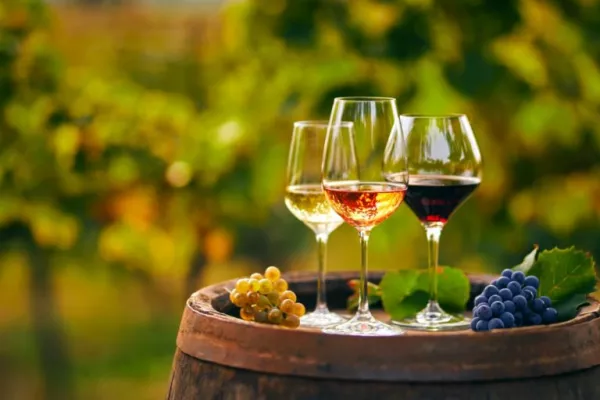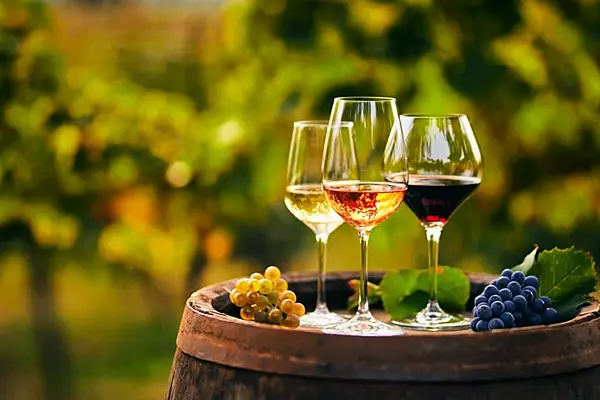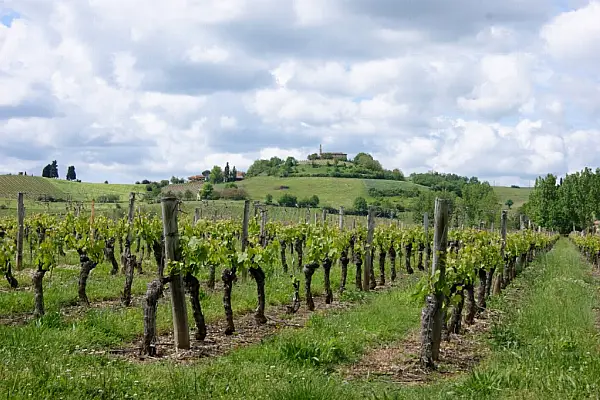In 2012, a startup named Club W set out to help millennials find and buy decent wine on the internet. With bottles from a few boutique vintners, a slick web platform and a simple recommendation algorithm, the Los Angeles-based company had a propitious plan.
It didn’t work quite as hoped. So when the company’s founders tried again, they decided to get their hands dirty.
If there was ever a product in need of what Silicon Valley calls a discovery engine, it’s wine. Consider the numbers: About 25,000 different wines are for sale right now, says Nielsen, with 14% having hit the market in the past year. Not even the most soused sommelier can keep up, let alone everyday drinkers who, if lucky, find a label they’ve tried before.
“There are a lot of people who are intimidated,” said Kristie Petrullo Campbell, a wine consultant and former sommelier at Manhattan’s Jean Georges. “If they go into a wine store and a salesman comes up to them immediately, they just close up.”
Winc, as Club W rebranded itself, intended to demystify wine and shrink the supply chain, not unlike Warby Parker’s eyeglass play or the boxable foam mattresses of Casper. It cut out distributors and retailers and offered an online rotation of 50 to 100 wines based on a short survey, including questions such as: “How do you feel about salt?” and “Do you like citrus?” Prices clumped around $13 a bottle, and members who took four bottles a month got free shipping.
Co-founder Brian Smith said Winc thought of itself as a tech company. “Wine clubs at the time were crusty,” he said. “Yet, wine as a product is really fun. Approachability was at our core.”
Two problems with Winc’s plan slowly became evident. Among serious wine folk, its approach was considered more glorified marketing than true expertise. Second, the competition was already fierce, with no shortage of rivals aimed at cracking the same digital code. Web-based wine shops and monthly clubs were rampant, some of them run by sommeliers or vintners themselves (and one run by Martha Stewart). At least two companies built businesses remarkably similar to Winc. Plonk Wine Merchants, an online store, started a monthly subscription service promising artisanal, boutique wines from around the world. Bright Cellars, based on a recommendation algorithm from two MIT grads, followed in 2014.
Winc needed an edge. In marketing-speak, the company wanted to have a deeper dialogue with its tribe of winos. It wanted to be more authentic. It needed, in short, to make it’s own wine.
“We’re able to kind of reverse-engineer wine production.”
Venture capitalists urge tech companies to bravely pivot from a business plan if it’s floundering. But there are pivots, and then there are pivots. In this case, a small crew of entrepreneurs steeped in the soft-art of search engine optimization and graphic design went fully vertical, all the way back to the literal roots of the business.
In the summer of 2015, Winc hired seven vintners, headed by Ryan Zotovich, who grew up in a central California winemaking family. True to the mission, the team’s first offering was named WKND, a sparkling wine. It was a bold move, but there was a data argument to be made. Winc had amassed a modest but growing pile of intelligence about what its customers liked. If handled correctly, it could use those cyber clues to inform its production and generate a greater share of “hits.” At least, that’s what Winc’s co-founders told their investors when they pitched the plan (over a few glasses, of course).
“We had this very direct connection with customers that doesn’t really exist in the wine business,” Smith explained. “So we’re able to kind of reverse-engineer wine production.”
The wine industry in America isn’t set up as most would imagine. There are few old patriarchs tottering down from the ranch house to quarterback the process, from picking, to pressing to the first prospecting sip. Generally, vineyard owners are LLCs, with some of the holding companies headquartered a world away from the grapes. Those landowners typically hire other companies to manage the vineyards—outfits that irrigate the fields and hire laborers when it’s time to harvest. And those managers, in turn, hawk sections of the vineyards to winemakers, many of whom may also be located very far away.
In sum, the person who ultimately makes the call on when grapes are picked, and how they are fermented and aged, may simply be leasing a row of vines. Being a winemaker, therefore, can be as easy as booking a vacation.
It’s hard for a would-be winemaker like Winc to shrink the supply chain upstream without buying a bunch of land. However, as a retailer, it doesn’t have to pay someone else for wholesale juice if it’s also the winemaker. “Essentially, you’re getting it below wholesale,” says Campbell, the sommelier. Not surprisingly, the number of winemakers in California has surged by one-third in the past five years, according to the Wine Institute trade group.
The challenge lies in making something better than rotten-berry swill, a feat that generally requires a hands-on approach. While some vintners rack up frequent-flier points handling three or four harvests a year around the globe, Winc focused on California, specifically a small blanket of vines just east of Santa Barbara. There, a short breeze from the sea, the climate quickly transitions from warm and dry (the recipe for a good cabernet sauvignon) to cold and moist (the stuff of prime pinot noir).
Many of the grapes that go into wine bottles are handled by Mike Testa, general manager of Coastal Vineyard Care Associates. Testa, whose crews do the irrigation and picking, said Winc has a very distinct winemaking philosophy, focused on “pure” varietals rather than a particular flavor; Zotovish also likes to pick Winc’s grapes early. “I farm very specifically for [Ryan], as though he owns those vines,” Testa said. “Some other wines are grown more like a commodity.”
Since Winc’s first bottle was sealed, hits have been more frequent. Its Chop Shop Cabernet Sauvignon is a consistent top-seller, and its Summer Water rosé became a cultural phenomenon, selling roughly 36,000 cases to date. “Our story—that authenticity, that narrative—is coming through,” Smith said.
Even the wine establishment started coming around. Today, 15% of Winc revenue comes from retail shops or restaurant sommeliers. Winc has also signed deals to supply convert venues such as the Hollywood Bowl and Brooklyn’s Barclays Centre. “There’s a new kind of wine-drinker out there, and this model plays into that,” Campbell said. “Even the collectors are changing. They aren’t following ratings—they are very, very curious.”
Today, Winc claims to be the fastest growing winemaker in the country and has amassed $310 million in funding, much of which came from Bessemer Venture Partners, known for backing Blue Apron Inc., LinkedIn and Pinterest, among others. Make no mistake, though, it’s still a small player in Big Wine. Regulations forbid the company from shipping to eight states, leaving a large share of the U.S. market out of reach. And delivery itself can be a problem, with FedEx requiring recipients to be home and provide an adult signature to take possession.
This year, Winc will bottle about 300,000 cases with roughly 100 different labels. That’s a drop in the barrel when you consider California’s annual output of 285 million cases. The company declined to discuss revenue, but an average transaction price of $20 a bottle would equate to about $72 million in annual revenue.
As it ages, Winc is growing bolder. In September, it started selling a $38 Syrah dubbed Baseline, the first of what will be a line of high-end varietals. Smith claimed it’s one of the best wines coming out of California this year. “I hesitate to use the word ‘esoteric,’” Zotovich added. “But it’s nuanced.”
Earlier this month, Winc added a $45 pinot noir to the Baseline brand, and it will follow with a similarly priced Chardonnay in April.
The Baseline batches are developed to age well. One can put a case in the cellar and crack it in 10 years, whether or not Winc is still around. Smith, in particular, hopes his wines will be enjoyed by those who wrote off the company as a millennial marketing machine.
News by Bloomberg, edited by Hospitality Ireland









